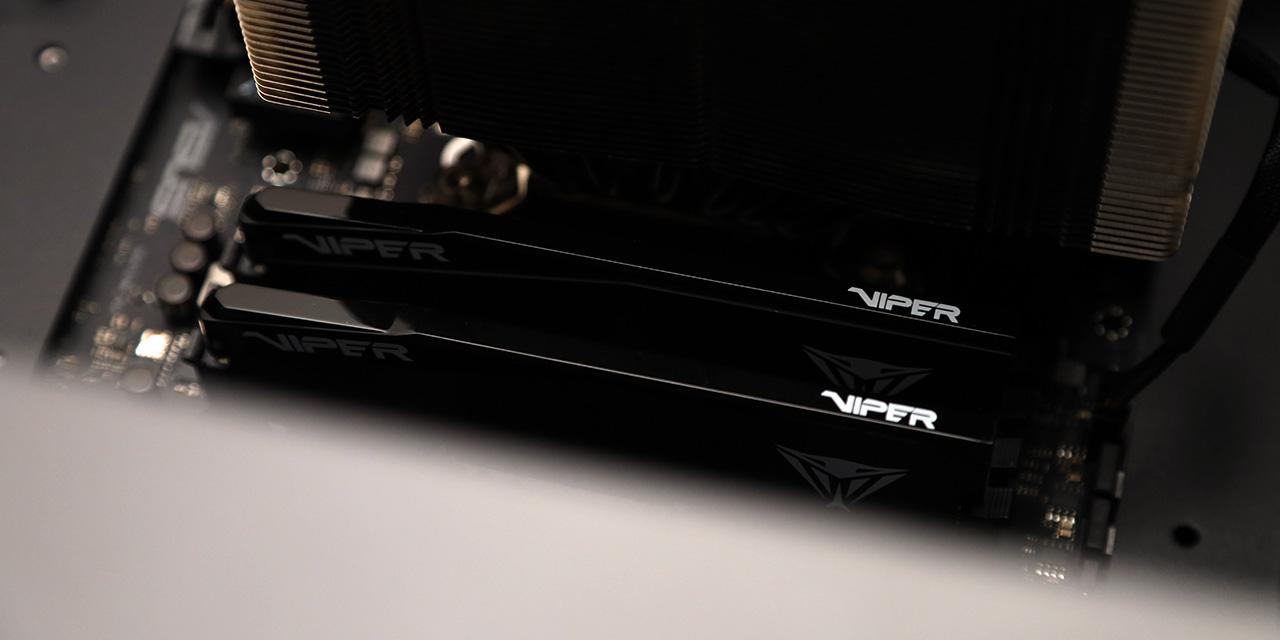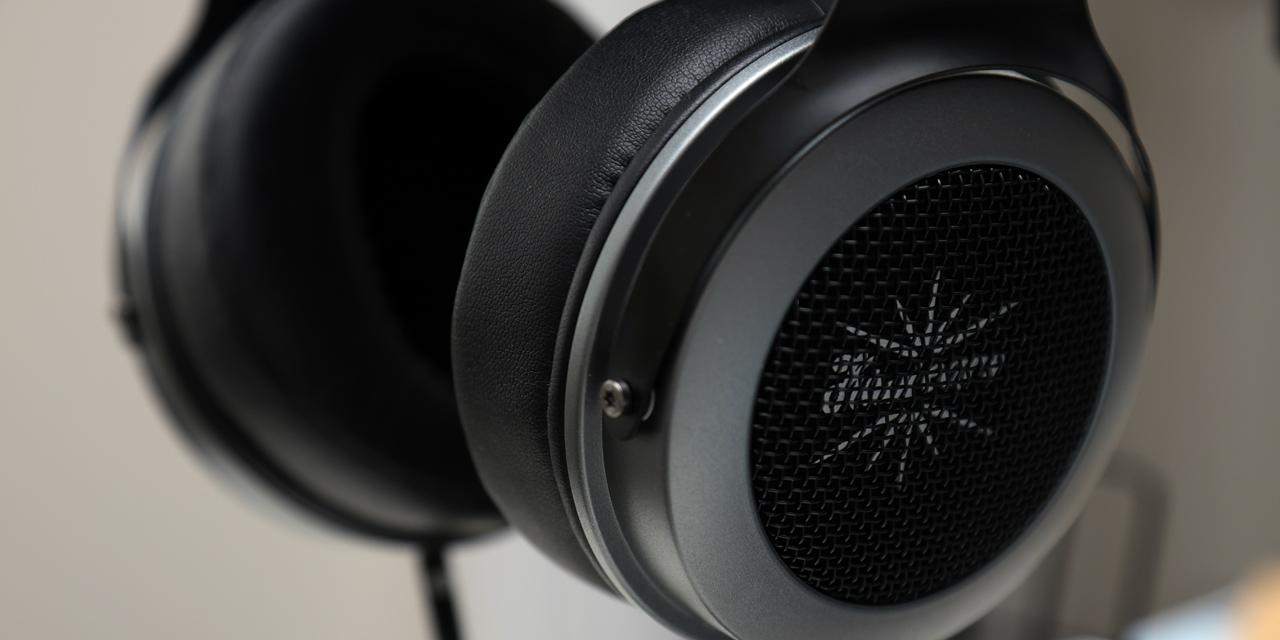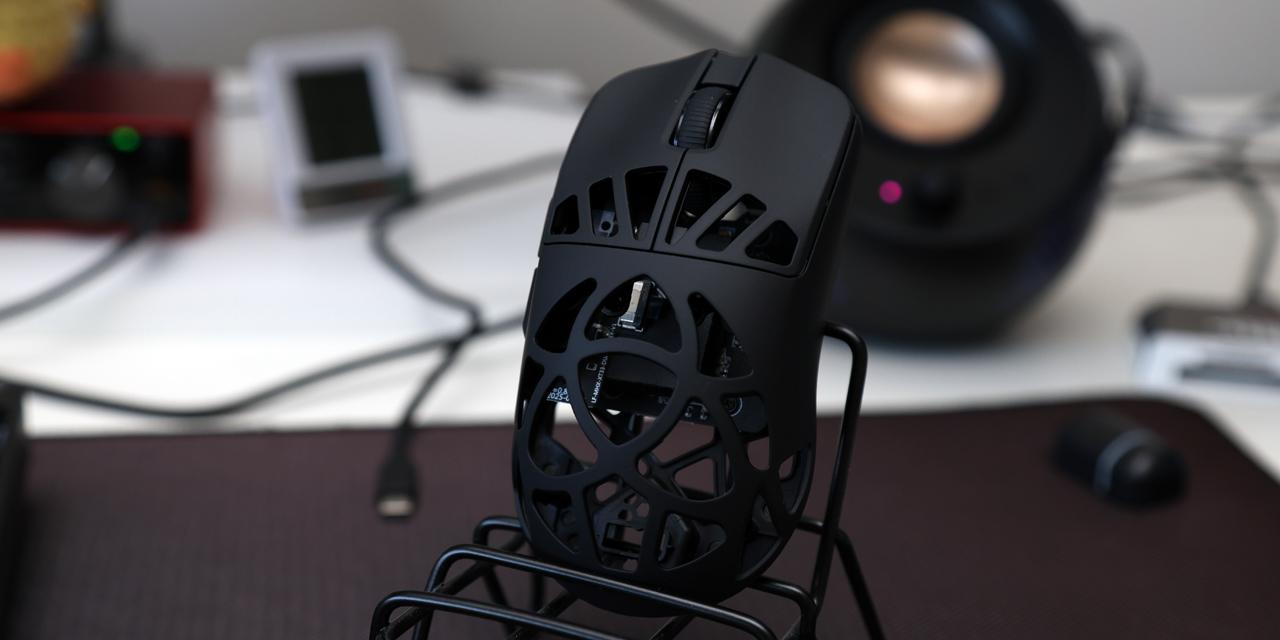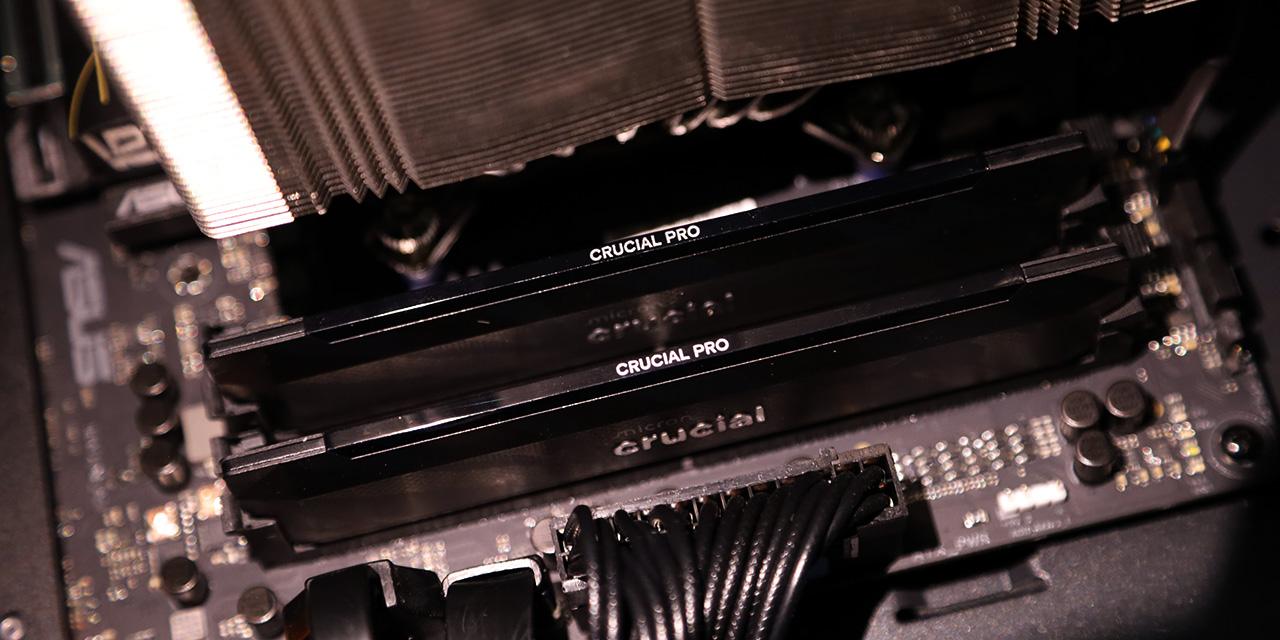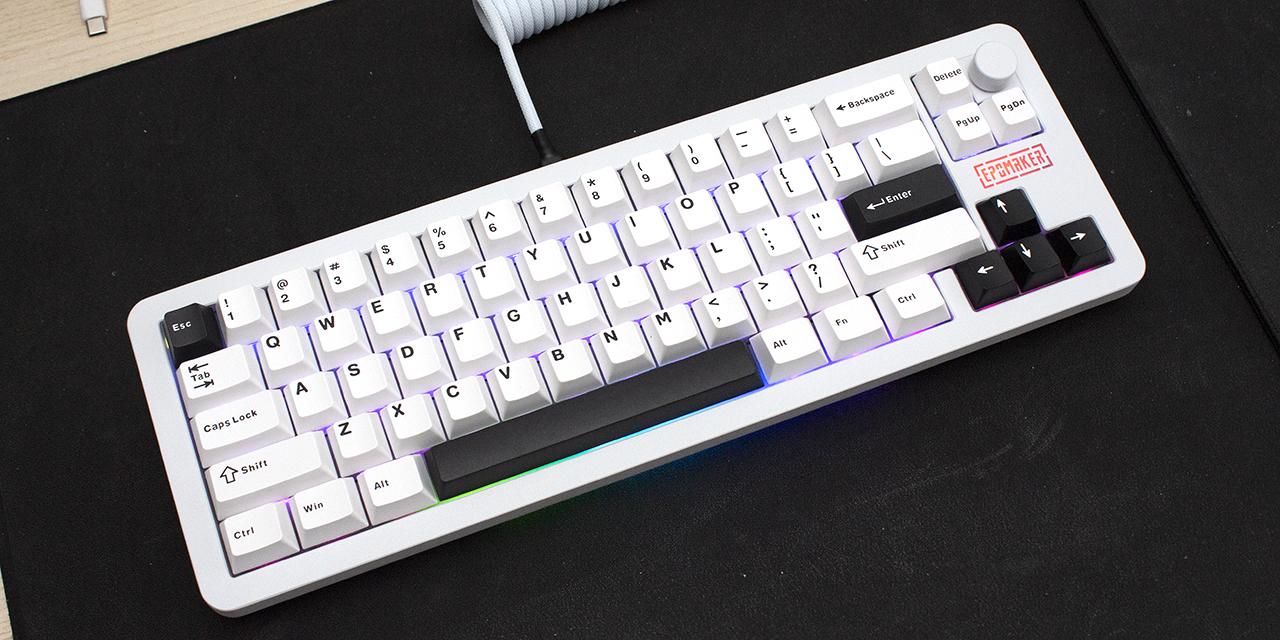Page 2 - A Closer Look - Hardware and Software

As part of the Corsair K70 lineup, the PRO TKL closely resembles the recent K70 Core with its simple and clean design. Unlike the previous K70 RGB MK.2 Low Profile, K70 RGB Pro, or K70 RGB TKL Champion Series, we do not have a large forehead above the keyboard. On the other hand, a common design element of all these keyboards is the island-style layout with an exposed metal backplate, revealing the switches underneath. The all-black finish is consistent throughout the Corsair K70 PRO TKL, with a brushed aluminum backplate to conceal fingerprints and handling marks. The plastic sides feature beveled edges to make the keyboard sleeker. Corsair branding is kept minimal, with just the sails logo above the arrow key cluster and a slim Corsair name on the wrist rest. Otherwise, the K70 PRO TKL is available in both black and white.
The Corsair K70 PRO TKL measures 364mm in width, 131mm in depth, and 38mm in height at the tallest keycap. This increases to 48mm with the kickstand extended. As mentioned earlier, the top plate is made of aluminum, while the rest of the enclosure is plastic. According to Corsair, this keyboard weighs 1.463kg. In terms of build quality, the K70 PRO TKL is extremely sturdy, showing no signs of flex or movement even under heavy pressure or torque. Despite the plastic shell around the keyboard, the overall construction is solid. Corsair also includes a palm rest, which is a welcome addition to a smaller keyboard. It has the same width at 364mm, a depth of 77mm, and a height of 21mm. It features a vinyl cover with a textured surface and a foam layer underneath for added cushioning. Best of all, it attaches magnetically and holds securely. Unfortunately, I found the rest to be a bit higher than I would like, although this ultimately comes down to personal preference. Even so, I appreciate its inclusion.

The Corsair K70 PRO TKL employs a standard tenkeyless North American QWERTY ANSI layout with eighty-four keys. The layout is easy to adjust to as it only omits the number pad. The bottom row follows a standard spacing with 1.25U keys on everything that is not a space bar. On the right side, there are Function and Menu keys, along with a full-size Shift key. Between the Escape and F1 key, a pair of white indicator lights illuminate when Caps Lock or Scroll Lock is active.
Another key difference is in the top right corner, which features two more buttons and a large rotary knob. By default, the two buttons control Game Mode and media playback, respectively. When Game Mode is activated, it can trigger several changes, including a faster report rate, Windows key lock, and Rapid Trigger activation. When you press it, a sweeping light effect shows across all of the keys to indicate Game Mode is on. The media button functions as Play/Pause. Finally, the rotary knob is primarily used for volume control with a press to mute or unmute. However, pressing Fn+F12 will change this knob to adjust keyboard backlight brightness, vertical scrolling, horizontal scrolling, or zoom. All of these are configurable with Corsair's iCUE software.

Secondary functions are all around the Corsair K70 PRO TKL, and the specific keys light up when you press the Function key. You can then execute the function by holding Fn and the corresponding key. These functions include shortcuts, media keys, lighting changes, and hardware settings. Starting from the function row, F1 is used to toggle Scroll lock, while F2 cycles through profiles. F3 and F4 decrease and increase the backlight brightness between five different levels. F5 to F8 are media keys, including Stop, Previous Track, Play/Pause, and Next Track. F12 cycles through the different dial modes for the rotary knob. We will explore the lighting changes later in our review.
The last set of keyboard shortcuts only function if iCUE is not running, and these are used to change the different Hall effect settings. They can be activated by pressing Fn + Menu key for two seconds. Once it is held down long enough, the lighting will change to show this hardware setting mode. From here, pressing the top row, from Escape to F12, will change the actuation distance of the Hall effect keys. This ranges from 0.8mm to 3.2mm depth in 0.2mm increments. Once pressed, the analog keys will light up with breathing to indicate these keys are the only ones affected by this setting. The number row, from 2 to =/+, changes the rapid trigger setting actuation distance, ranging from 0.2mm to 1.2mm in 0.1mm increments. Once pressed, this number will blink to show it is selected. In both cases, pressing the same key again will revert the setting back to the default hardware setting. Finally, if you want to re-calibrate all of the Hall effect keys, you can hold down the Game Mode button for two seconds while we are in this hardware setting mode.

The base of the Corsair K70 PRO TKL is surprisingly stylized, considering it is a part of the keyboard that is rarely seen. At the center, there is a large circle with a Corsair logo. To the right, a label displays the company name, product name, safety certifications, and an identifying serial number. The base features various lines and edges, adding to its design. For stability, rubber pads are positioned on the bottom corners to keep the keyboard in place. The top kickstands extend outward to raise the back part, and the kickstand is rubberized to prevent sliding, whether raised or flat. The palm rest base follows a similar design, featuring the Corsair sails logo at the center and six rubber pads for added grip. Finally, on the back left side of the keyboard, there is a USB Type-C port for connecting the included rubber cable to your device.

The Corsair K70 PRO TKL's tenkeyless layout is simple and intuitive, with all keys positioned where you would expect. I appreciate the quick-access secondary functions, especially since they all light up when the Function key is pressed. The volume knob is another highlight. It feels clicky without being cheap, and its notched spin has enough resistance to avoid accidental changes. Each notch adjusts the volume in two percent increments. As I mentioned earlier, I found the palm rest slightly too high for daily use, occasionally making access to the bottom row feel less comfortable. It is easy to move out of the way, but I would have preferred a slimmer design for better ergonomics.
Regarding the typing experience, I am pleased with the Corsair K70 PRO TKL's audible and tactile response. Keyboards from gaming manufacturers do not always have the best reputation for consistent sound or feel, but the K70 PRO TKL delivers a genuinely satisfying experience. Most keystrokes sound solid with minimal resonance. The keystroke travel is smooth and consistent across all keys, producing a damped yet defined click. When bottoming out, the keyboard emits a slightly higher-pitched sound, but it does not feel hollow. Longer keys, such as the space bar and Enter, have a slightly different, more clacky sound, although the difference is not too jarring. The stabilized portions of these keys feel smooth. There is a bit of rattle on the stabilized keys, but it is not too pronounced. You can hear the typing sample above.

The lighting of the Corsair K70 PRO TKL is vibrant with its double-shot keycaps that shine through the legends. This means the keys can be harder to read when the keyboard is not lit but are legible when turned on. These are north-facing lights, which means you might run into illumination compatibility issues with other keycaps. This makes sense, given the keys have their legends on the top part of the keycap rather than the bottom. All the keys are lit up evenly with the exception of the secondary functions that are etched into the keycap instead of shining through. I appreciate the two buttons beside the volume knob have RGB LED lighting that integrates with the rest of the keyboard. The lighting effects can be changed in the iCUE software or with secondary functions.
When iCUE is not running, the secondary functions on the number row let you choose between different lighting effects. These are active when you press Fn, followed by the corresponding key. The tilde key shows the iCUE-configured hardware profile lighting, while the rest of the numbers let you choose between different effects, such as watercolor, spiral rainbow, rain effect, rainbow wave, reactive key, reactive key ripple, color cycle, color wave, or a static color. Pressing the 0 multiple times will cycle through eight preset static colors. The hyphen and equal keys change the speed, and the left and right square brackets change the rotation. Finally, you can press Fn + F3 or F4 to decrease or increase the backlight brightness.

As you might expect from Corsair's products, the K70 PRO TKL works with their iCUE software. This all-in-one utility is used for basically all of Corsair's products. Currently, they are on version 5. It is readily available from the manufacturer's website and the download is a 3.2MB executable. During installation, if it recognizes the K70 PRO TKL is already plugged in, the installer will automatically install the necessary modules.
The Corsair K70 PRO TKL module breaks down into six pages. The first is Lighting Effects, which includes different presets and custom modes. There are static, dynamic, and reactive modes. Any moving lighting effects can be changed in speed or color. The second is Key Assignments, which allows you to alter almost all of the different keys to execute different functions. This includes keyboard and mouse actions or custom macros.

Next, we have Key Actuations, which is used to set up different Hall effect specific settings. This includes changing the actuation point, adding and configuring a second actuation point, reset point, and a rapid trigger. These can provide an advantage in competitive gaming to easily quick tapping and execute multiple consecutive presses. That being said, many of these games do not allow for this sort of input and can potentially ban users of the hardware, so you should be careful. The fourth page of Control Dial lets you change the rotary knob's actions. The Performance page is to change what happens when Windows Lock is activated, as well as change the indicator lights for the profile and the function shortcuts. Finally, in Game Mode, users can change what happens when you activate game mode, including setting a higher polling rate of up to 8000Hz, setting the backlight brightness, setting rapid trigger, setting a static backlight color, and the color of the Game Mode button when it is active.
There are a few more changes you can make, and they come under different menu options. The information "i" logo lets you see all of the different secondary functions. The cogwheel is where you can update the keyboard's firmware, iCUE utility, general wired polling rate, backlight brightness, keyboard layout, and enable PlayStation mode. Finally, there is a toggle to enable or disable Device Memory Mode. When this is enabled, this will save the profile settings to the onboard memory of the Corsair K70 PRO TKL. Inside, there is 8MB of internal memory to save five different profiles and all of its settings. If you disable this toggle, the settings will only be saved on the system and only active if iCUE is running. Overall, I found Corsair iCUE to be generally easy to use, but a bit clunky or bloated at times. Thankfully, the hardware memory and all of the configurations you can switch on-the-fly means you can easily use the K70 PRO TKL without it after it is configured.
Page Index
1. Introduction, Packaging, Specifications
2. A Closer Look - Hardware and Software
3. A Closer Look - Disassembly and Internals
4. Conclusion
